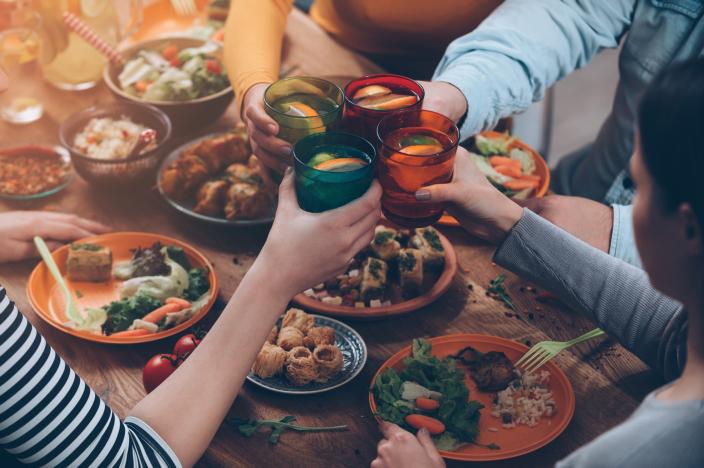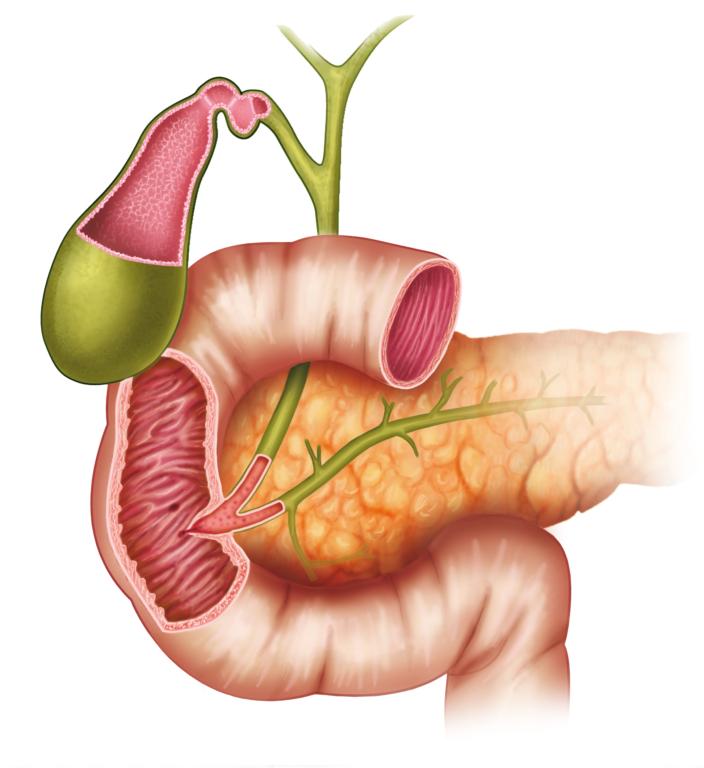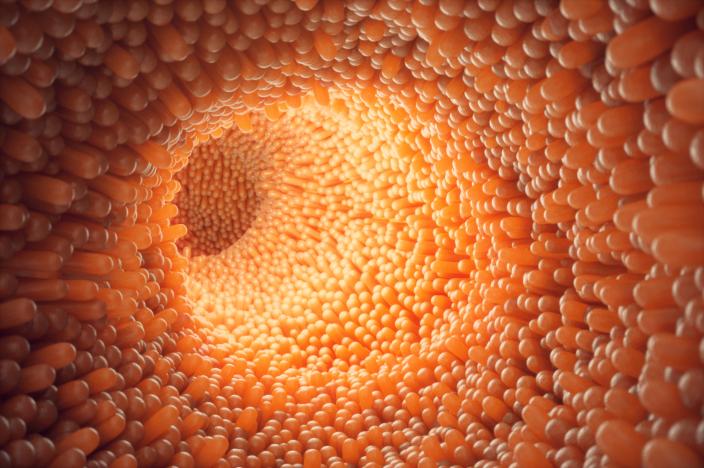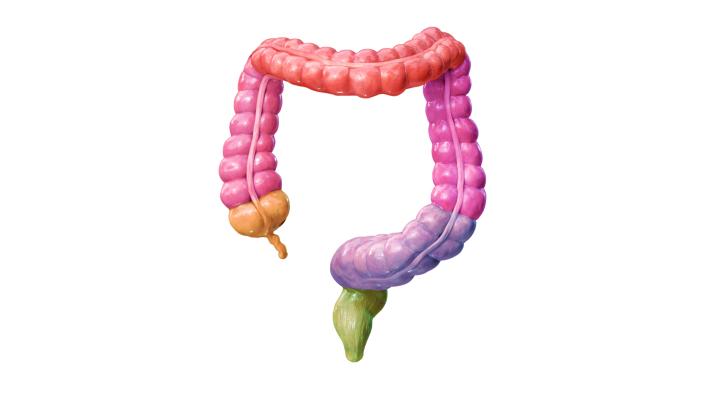Your Digestive System Wants to Work For You
By Jacobus Hollewijn

August 15, 2022
Digestion
This article is an extended version of seven one-minute weekly radio commercials that played in March and April of 2022
Digestion is misunderstood a lot. People talk about their stomach when they mean to say intestines. Should we drink a lot while we eat? Pills for heartburn, GERD, acid reflux, hiatal hernia, gas, and bloating (both as a prescription drug and in supplement form) seem to be increasing. Are they perpetuating the problem? Digestive issues are fixable, sometimes very quickly. We just need to understand its purpose and workings better. Let's get into it!
HOW DOES OUR DIGESTION START?

Most think the problem is in the actual stomach organ; they’re trying to either block the acid feeling, or they’re looking for enzymes. Others who experience bowel problems may get probiotics, stool softeners, or fibers.
This topic is super-interesting to me, and I hope to give you a better picture in this short article. However, one tip I can give you now (and will elaborate on later) is not to drink before, during, and after meals.
Digestive issues start anywhere between the opening of the mouth and the exit through the anus. NOT digesting food and liquids properly may have damaging effects elsewhere in the body, some of it noticeable within days; others may be experienced as we get older.
To avoid problems it would be great if we had some kind of owner’s manual for how our body functions and what it needs; just like we have for a car or anything else we use regularly. However, we’ll have to figure things out as we go!
Putting the right food and liquids in our mouth is super-important. Some people eat according to their Blood Type; others may have done some type of allergy test and focus on highly beneficial foods while avoiding anything that causes allergic reactions all over the body. There is no shortage of dietary choices these days. A ton of books are written about why one diet is better than another; and many options are available on YouTube and internet to delve deeper into the science behind them. But at the end of the day it is you who can say if you feel better in your digestive tract, and as far as overall energy is concerned.
Chewing correctly and letting saliva start the digesting process is easy to overlook, because when we are in a hurry we gotta eat fast. Doing this correctly (as much as possible) will really improve your food processing as it moves down the digestive tract. The saliva we produce should be enough to send the macerated pieces of food through the throat and esophagus.
THE IMPORTANCE OF GOOD STOMACH ACID
Once food descends into our stomach, a very important element is added: stomach acid!
The purpose of stomach acid is to liquify food and turn it into a soup. In order to do that in about 45 minutes, acid needs to be very strong. If our stomach acid is diluted and not very strong, we may experience digestive issues further down the track.

There are different reasons why it’s done:
- I forgot to drink today;
- I thought I should be drinking, so I won’t eat so much;
- Food gets stuck on the way down;
- I get acid reflux when I don’t drink;
- Going to a restaurant I get a glass of water followed by perhaps a beer, ice-tea, juice, or a glass of milk.
Trust me, we are not doing our stomach any favors!
As I just mentioned before: even when we don’t drink, our mouth produces enough saliva to help the food go down the esophagus to the stomach.
I always suggest: IF liquids are consumed while eating, let it only be if needed; and do not let it be more than about 7 ounces. Obviously, I don’t want you to choke; nor do I want you to miss out on a good glass of wine or a cocktail around dinnertime. The reason I mention these is because those are alcoholic beverages that we usually sip anyway, unlike beer, water, juice, milk, and ice tea. Those 7 ounces should be consumed between 45 minutes before the meal, all the way to 45 minutes after we’re done eating.
During the 45 minutes before eating acid is building up to a pH of about 1.5-2.0. Also, don’t drink anything while you’re eating, because the food is diluting the acid to a pH of 5.0 where we start our digestion. And I recommend no liquid for about 45 minutes after our meal so the acid can liquify the food. So, figure that's two times 45 minutes, as well as about 30 minutes for actually eating. This adds up to about two hours.
Give it a try for a couple of days and see if digestion improves?
How many people go to a restaurant? First thing you get is a glass of water. Then, your waiter returns for the drink order. While that is being ordered, you’re looking at the appetizer menu. The drinks show up and the waiter takes your appetizer order. By the time those arrive your beer/water/juice is probably mostly gone; so, another drink order is placed while the main course is being ordered. Well, you get the picture…
Most people when they leave the restaurant are feeling bloated to the point they want to unbuckle their pants.
Now try that again next time, while not drinking more than 7 ounces in way of taking a sip now and then. I pretty much guarantee you will feel much better.
It’s a fun and inexpensive experiment. I’m curious to know if it made a substantial change?
FROM THE STOMACH TO THE DUODENUM

Officially known as the upper part of the small intestines, in my opinion the duodenum is its own little organ. I say that because it is filled with enzymes and bile, while the intestines contain bacteria, or probiotics.
The duodenum’s job is to convert the liquid "soup" coming in from the stomach into micronutrients. It's got a lot of work to do, because it is only about 11 inches long before it goes into the small intestine where bacteria then help these micronutrients to be absorbed into the bloodstream.
In the illustration (left) you see the pancreas (yellow) and the gallbladder (green) connecting with the duodenum (pink-beige) through small channels. In order to convert the liquid soup from the stomach into micronutrients, the duodenum receives specific enzymes from the pancreas, as well as bile from our gallbladder. One of those enzymes (Protease) converts liquid proteins into amino acids. Another enzyme (Amylase) converts liquid carbohydrates into simple sugars, such as glucose, ribose, lactose, maltose, galactose, and mannose. And a third enzyme (Lipase) converts liquid fats into useable fats, such as Omega-3's EPA and DHA, Omega-6's GLA, as well as Omegas-7 and 9. Lipase actually works better with bile salts. This is a reason why those who've had their gallbladder removed may need to take some Ox-bile capsules to replace that loss.
If you have challenges with your digestion, there are several ways to look at it. Many people have problems in the intestines and therefore think they need to take a probiotic to calm the colon. I often tell them whatever is going on at the lower end may have started at the top where the mouth and stomach are. “Mistakes” made there can have a debilitating effect in the intestines.
I suggest to chew well, don’t drink around your meals If that helps with your symptoms, but they’re not all the way a 100%, try a pancreatic enzyme product and/or some ox bile capsules.
OUR SMALL INTESTINE (JEJUNUM) AT WORK
Now, let's talk about the real small intestine, also called jejunum. Everything that has made it through the duodenum is now entering the jejunum. Here we have both bacteria, or probiotics, and yeast.

The small intestine contains bacteria called lactobacillus. Here there are many different types, or strains. The best-known lactobacillus strain is acidophilus. This one is so well-known that many people talk about getting acidophilus when referring to probiotics. But acidophilus is part of lactobacillus, not the other way around… There are many lactobacillus strains, including salivarius, rhamnosus, brevis, reuteri, bulgaricus, and fermentum.
We need enough good bacteria to do this penetration/absorption job, which has become a two-fold challenge:
1) we lose bacteria when we take antibiotics, and
2) we don’t always liquify our food properly in the stomach and/or we don’t process them correctly in the duodenum.
To replenish bacteria in the small intestines, you would be looking for a probiotic dietary supplement containing a lot of Lactobacillus bacteria. If you are trying to build more of your own (lost/damaged) bacteria, you could add some PRE-biotics, such as Inulin or FOS (FructoOligoSaccharides).
Naturally occurring yeasts in the intestines play an important role to all the microorganisms in the human digestive tract. Yeast molecules are larger than the bacteria; and are therefore not able to pass through the villi. This is important because we don’t want yeast in the bloodstream and “travel” through our body’s system; it can cause a disorder called systemic yeast, or candida
There is a need for a delicate balance between these microorganisms and yeast.
OUR DIGESTIVE TRACT IS ACTUALLY OUTSIDE OUR BODY!
Our digestive tract, which runs all-the-way from the mouth down to the rectum, and then the anus, is really a long sleeve with a bag for the stomach.
And, I’ve heard a doctor once say: our digestive tract is officially considered outside our body! The reason is there is NO BLOOD anywhere. If you are bleeding in your throat, your stomach, or your intestines… you better see a doctor immediately!

One purpose of the large intestine is to absorb water and salts from the material that has not been digested as food, and get rid of any waste products left over.
As far as penetration and absorption through the colon wall is concerned: the large intestine also absorbs nutrients that are created by the bacteria that reside there. When you consume fiber, a form of carbohydrate that otherwise cannot be absorbed, bacteria break down the fiber into substances called short-chain fatty acids, which are then used by the large intestine as an energy source, the University of Virginia reports. These bacteria also make vitamins, such as vitamins B1, B2, B12 and K; the colon is then responsible for absorbing these vitamins so that they can be used by the body, according to BecomeHealthyNow.com.(1)
After that, left-over food particles and fibers are massaged and shaped into bowel.
Bacteria in the colon are called bifidobacteria. In the bifidobacterium family you’ll find strains such as lactis, bifidus, breve, longum, and infantis.
It’s a fascinating topic and process, as well as a very important aspect of our immune system (the better we digest our foods and liquids, the better we absorb them, and supply our cells with immune-enhancing nutrients).
Let’s recap:
LET'S RECAP:
The better we chew our foods and mix them with saliva, it will enter the stomach in perfect condition in order to be liquified by our stomach acid. After the stomach we have our duodenum where pancreatic enzymes and bile from the gallbladder break this liquid soup further down into micronutrients (amino acids, simple sugars, single omega-3 and omega-6 fats). This is all necessary in order to be better transported through the wall of the small intestines by our micro bacteria (i.e. probiotics) on their way to the liver and body’s cells. Whatever is not absorbed into the bloodstream is hopefully pushed through the gut and out of the body in the form of bowel.
Because this is the end stage of our digestion it will show if you have done a good job, starting way above, in the mouth.
Therefore, symptoms/disorders/diseases such as colitis, Crohn's, diarrhea, constipation, diverticulitis, and IBS have a cause. And that cause may have started way above in the mouth and stomach.
If this whole process intrigues you, set some new goals on how to improve your digestion.
The purpose of this website is to inform, educate, and entertain, not to diagnose, treat, or cure. Jacobus is not a licensed physician. If you intend to utilize any of the information contained in the articles and/or podcasts, I recommend you see a licensed, competent medical provider of your choice, or find additional information from other reputable sources. I cannot control the opinions of my guests. I will double-check my facts in good faith, but may not be able to fully verify every statement made by any third party.
If you utilize any information from this Website, you do so at your own risk.
